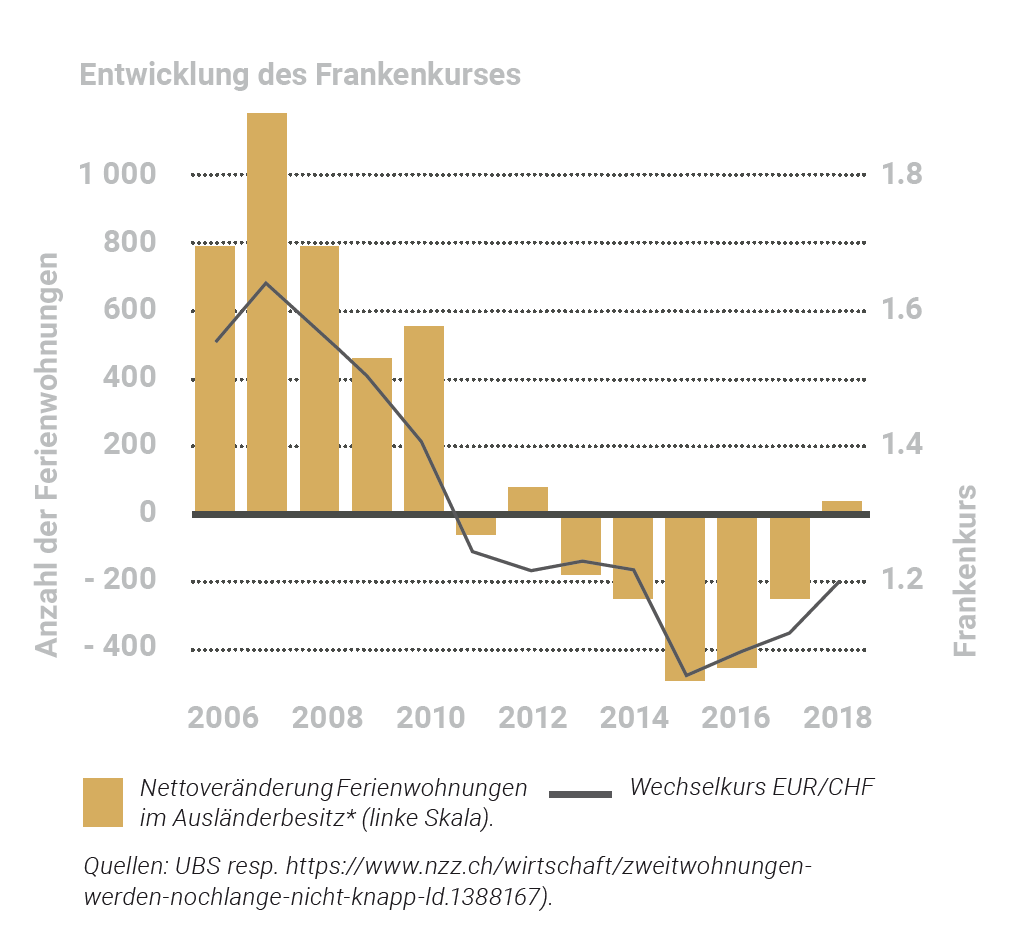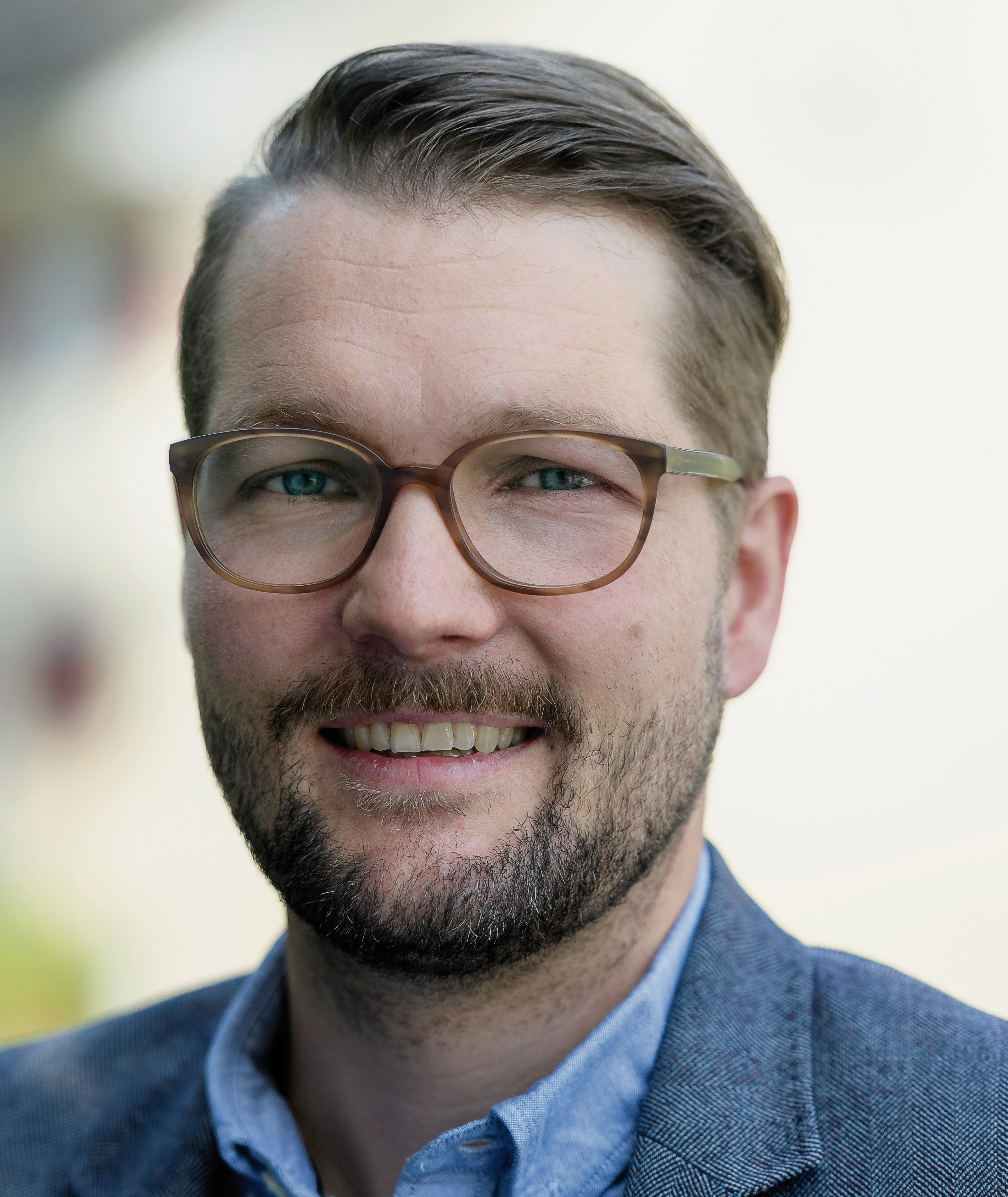On 11 March 2012, the Swiss electorate adopted the popular initiative "An end to the boundless construction of second homes" and thus decided to severely restrict the construction of second homes. The initiative demanded that the proportion of second homes in a municipality should not exceed 20 percent. An ordinance published at the beginning of 2013 was valid until the implementing legislation for the second housing initiative came into force and provided clarity in the market. Since 1 January 2016, the Federal Act on Secondary Housing (Zweitwohnungsgesetz ZWG) has been definitively in force and regulates the future construction of second homes. The municipalities concerned, i.e. towns with a proportion of secondary dwellings of more than 20 percent, include practically all tourist regions in the cantons of Berne, Grisons, Ticino, Vaud and Valais.
Transitional provisions led to construction boom
Until 31 December 2012, second homes could still be approved under old law, which led to a marked increase in building applications between March and December 2012 and triggered a real construction boom. In theory, all approved buildings should have started construction within twelve months (with a one-time extension of 24 months). However, as exemptions or staggered contingents had been introduced in many municipalities, new construction activity remained at a good level even years later. At the same time, it is still possible under the new regulation to expand the offer under certain conditions. These include a) the demolition of an object with secondary living space, the area of which can be increased by up to 30 percent in the case of a new building (at the moment), b) tourist apartments, c) apartments in structured accommodation establishments, d) apartments in sheltered buildings or buildings that characterise the townscape, and e) protected buildings that characterise the landscape.
Excess supply is decreasing steadily
The balance between supply and demand became unbalanced due to the construction boom from 2012 to 2017. At the same time, there was a heterogeneous development, because the absorption capacity of the various submarkets diverged. While there was a clear transition in the Davos/Klosters region, the effects in Arosa and Lenzerheide, but also in Flims-Laax, were much less pronounced because these regions benefit from new tourist offers, a high snow guarantee and an above-average proportion of Swiss guests. These regions are less dependent on economic development in Europe or other exogenous factors. Because hardly any new buildings are currently coming onto the market, the supply is constantly being reduced and is stabilising at a healthy level in most regions. This robust state of the market is favoured by the perfect conditions with lots of snow in winter and beautiful and dry summer months in the last two years. The financing of second homes is very attractive due to the interest rate situation - it is better to invest the equity in a holiday property than to pay negative interest at the bank!
Prices remain high and have risen since 2012
Single-family houses in attractive mountain communities are and remain sought after. This is why in many places top prices are achieved for this property category, which are close to the former highs. The situation is similar for rare luxury properties, which continue to meet with high demand, although the marketing period has increased. In the area of holiday apartments, i.e. the classic second home, price development varied regionally - with an upward trend in most towns. It should be noted that it was not the second home initiative per se that was decisive, but the attractiveness of a municipality based on many micro-factors. In recent years, Lenzerheide has become the second most expensive holiday region in Graubünden after St. Moritz (see Arosa-Lenzerheide excursus).

Focus region Arosa-Lenzerheide
Expansion of tourism offering shows positive effect
The adoption of the second home initiative did not stop Arosa and Lenzerheide from investing in the future as a tourist centre. Since the Urdenbahn, built in 2013/14, connects the two ski regions, Arosa-Lenzerheide has had the largest connected winter sports arena in Graubünden with over 225 kilometres of ski slopes. Today it is one of the most popular winter holiday regions in Switzerland. Biathlon, snowshoe hiking, sledging, curling, tobogganing in winter and summer bear park, mountain-, bike- and rope parks: the regional leisure and event facilities have been steadily expanded. In 2017/2018 the mountain railways were back in the black and in 2019 the business result was also very good. The number of overnight stays has also increased in the last two years.
Economic situation in Europe changes guest mix
The proportion of foreign buyers in the mountains has been declining for several years. In particular, potential buyers from Europe have been confronted with several negative factors since 2011. On one hand, the euro crisis and the associated appreciation of the Swiss franc, on the other hand, the economic weakness in Italy and France, as well as new tax framework conditions in the Abroad. Overall, the holiday markets have compensated for these negative factors and the associated appreciation of foreign competitor destinations such as Austria by increased domestic demand, with the exception of Ticino and Upper Engadine.

Second homes/parahotels with management complements offer
Tourist apartments are partially exempt from the restriction clause. This category includes in particular properties that are not individually tailored to the personal needs of the owner and that are offered for short-term rental at market prices as part of a structured accommodation business. The rental of holiday homes is easy to handle thanks to the various brokerage platforms, but is subject to strong fluctuations. According to UBS's "Alpine Property Focus", the occupancy rate of holiday homes in the off-season is just 20 percent. The market for managed second homes with compulsory letting has been small to this day and in certain regions it does not exist at all. The travel behaviour of "Generation X" and the "Millenials" is different from that of traditional holiday home buyers and should favour this temporary form of housing. It is still too early to assess the price and demand trend on the established holiday home market, a trend is not yet discernible. And it remains true that the top priority is the positioning and tourist attractiveness of a region in all segments.
Conclusion: Holiday homes remain en vogue - despite, or precisely because of, the second home initiative.
Since the adoption of the second home initiative, the holiday home market has offered the desired clarity and legal certainty. If one speaks about the secondary housing market, each vacation region must be considered individually. Nevertheless, the demand for second homes in tourist destinations will remain a general need. Today, people interested in buying are looking for good accessibility, infrastructures and offers suitable for their needs and an intact landscape. However, factors such as the general economic situation, the level of prosperity, the interest and refinancing level and psychological expectations of the future should not be underestimated and are almost more important. The holiday property is a luxury object and is only indulged in if the surroundings allow it.
"The supply of second homes is currently outstripping demand. For some quarters now, there has been renewed interest in almost all tourism regions."
|
Sascha Ginesta Managing Director Ginesta Immobilien Dipl. Betriebswirtschafter HF, |
Here you can find more information about the sale of your holiday league.
Here you can find the complete article in German for download as PDF.










